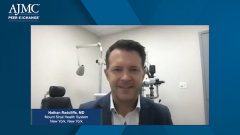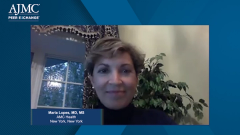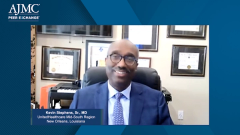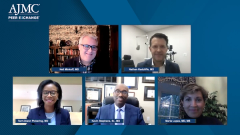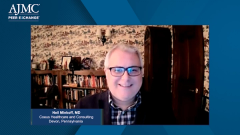
Diagnosing Glaucoma: Unmet Needs and Gaps in Education
Panelists discuss the worldwide gaps in diagnosis of glaucoma and how this negatively affects patient outcomes.
Episodes in this series

Transcript:
Neil Minkoff, MD: It is quite prevalent and my understanding, maybe you could touch on this, is it often goes undiagnosed or too lately diagnosed. Could you touch on those things?
Nathan Radcliffe, MD: The statistics are [that] worldwide 90% of glaucoma is undiagnosed. In the United States, it’s still estimated to about 50%. There’s a technology called Optical Coherence Tomography, OCT, that has helped identify glaucoma earlier. Even as a glaucoma specialist who’s trained to look at the optic nerve and pick up glaucoma, that tool still helps me find a few cases here and there. That type of technology can help with early diagnosis.
That said, it’s not a disease to be symptom driven. If you wait until you have symptoms from glaucoma, you’re, in most cases, legally blind at that point in time. Remember it affects peripheral vision and sort of climbs towards the central vision. We need peripheral vision to function. And it often does take the central vision, and you’d be surprised how many people can lose all their vision in one eye without noticing. You might think that would immediately set off an alarm bell, but many people out there don’t cover one eye and do that type of testing on their own and lose all of one eye and a good bit of the second eye before they even seek an eye doctor. That’s why we need these tools to get them in because if we’re waiting for symptoms, we’re going to be playing catch up, and glaucoma is a disease to be ahead of, not chasing after.
Neil Minkoff, MD: Both you and Dr Pickering are glaucoma specialists. I would assume though that most diagnoses aren’t being made by glaucoma specialists. They’re being made…are they being made by optometrists, routine vision screening? Where are these patients being identified?
Nathan Radcliffe, MD: Most patients are getting eye exams by optometrists, and then ophthalmologists, and then thirdly glaucoma specialists. A big thrust of my career has been to try to educate optometrists and comprehensive ophthalmologists to try to increase the level of care they give to glaucoma patients. I want them to take care of glaucoma. I don’t want it all for myself. There’s too much out there. We need everyone practicing at a high level here. That’s just the importance of education and awareness. Again, technology is helpful because we now have automated glaucoma testing that can be done by people who aren’t specialists that can almost bring their level of detection to the level of a specialist.
Neil Minkoff, MD: There’s a lot to unpack here especially for people who aren’t specialists and are trying to play a little catch up. The asymmetry of glaucoma is, surprising. Is that something that you think that the people who are referring patients to you are aware of?
Nathan Radcliffe, MD: No. I don’t think so because it’s still shocking even to many eye doctors to realize how asymmetric primary or idiopathic open angle glaucoma is. Both eyes of this patient have all the risk factors we’ve discussed. They’re the same age or the same race, they often have the same corneal thickness, maybe even have the same eye pressure which is the main treatable risk factor of glaucoma. And yet one eye will have severe glaucoma, maybe even be blind, and the other eye could have early or even just the beginning stages, maybe even not develop glaucoma yet. It’s a multifactorial disease, eye anatomy, vascular factors. All sorts of things play into it, and again, we have one way to treat it which is to lower the pressure.
Neil Minkoff, MD: Dr Pickering, what about how one eye compensates for the other? Does that interfere with diagnosis, or does that interfere with patients seeking treatment?
Terri-Diann Pickering, MD: Absolutely. Again, I see that all the time where I classically think about glaucoma as being bilateral but asymmetric, as Dr Radcliffe said. You can definitely have one eye be severely affected, the other eye the vision is, the peripheral vision in particular is quite good, and the patient is completely unaware that they have a deficit. Even after doing formal visual fields, they don’t realize it. And I’ll sit them across from me and have them cover their good eye with their hand, and I’ll say, “Look at my nose. Can you see my necklace? Can you see above my head?” And then they’ll realize that they can’t and all of a sudden it clicks in, and they understand that they have a problem. But unless you formally try to find or look at your own visual field in a very specific way, it’s often missed because we’re constantly moving our heads to look at things. Both eyes are open. It’s frequently missed, and, again, there are many different types of glaucoma, but most types are painless so there’s no clue.
Transcript edited for clarity.
Newsletter
Stay ahead of policy, cost, and value—subscribe to AJMC for expert insights at the intersection of clinical care and health economics.

